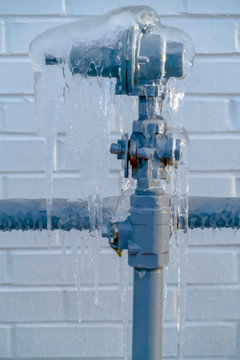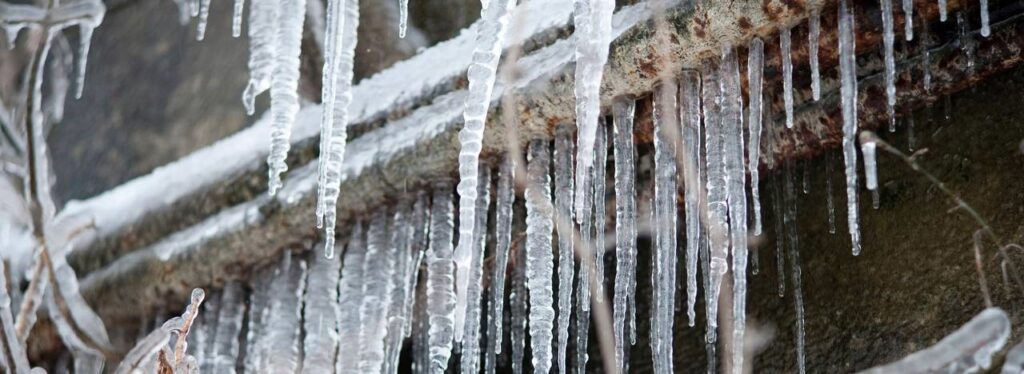Crucial Tips for Preventing Frozen Plumbing in Winter Conditions
Crucial Tips for Preventing Frozen Plumbing in Winter Conditions
Blog Article
Were you looking for selective information concerning How to prepare your home plumbing for winter weather?

Winter can wreak havoc on your plumbing, specifically by freezing pipelines. Here's exactly how to stop it from happening and what to do if it does.
Introduction
As temperatures decrease, the danger of frozen pipes boosts, possibly resulting in costly repairs and water damages. Recognizing just how to avoid frozen pipelines is critical for house owners in chilly climates.
Avoidance Tips
Insulating at risk pipelines
Wrap pipelines in insulation sleeves or use warm tape to protect them from freezing temperature levels. Focus on pipes in unheated or external areas of the home.
Heating strategies
Keep interior spaces appropriately heated up, specifically locations with pipes. Open closet doors to enable cozy air to distribute around pipes under sinks.
Exactly how to recognize icy pipes
Search for reduced water flow from faucets, unusual odors or noises from pipes, and noticeable frost on exposed pipelines.
Long-Term Solutions
Structural modifications
Think about rerouting pipelines far from outside wall surfaces or unheated areas. Include additional insulation to attics, basements, and crawl spaces.
Upgrading insulation
Buy top quality insulation for pipes, attic rooms, and walls. Proper insulation helps keep constant temperatures and lowers the danger of frozen pipelines.
Safeguarding Outdoor Pipes
Garden pipes and outdoor taps
Disconnect and drain yard hoses prior to winter. Set up frost-proof faucets or cover outside taps with insulated caps.
Comprehending Icy Pipelines
What causes pipes to ice up?
Pipelines freeze when exposed to temperature levels listed below 32 ° F (0 ° C) for extended periods. As water inside the pipelines ices up, it expands, putting pressure on the pipeline walls and possibly creating them to burst.
Threats and damages
Icy pipes can bring about water supply interruptions, residential or commercial property damages, and costly fixings. Burst pipelines can flooding homes and trigger extensive structural damages.
Indicators of Frozen Pipeline
Recognizing icy pipes early can prevent them from bursting.
What to Do If Your Pipes Freeze
Immediate actions to take
If you believe icy pipelines, keep faucets open to ease pressure as the ice melts. Make use of a hairdryer or towels taken in warm water to thaw pipelines gradually.
Verdict
Avoiding frozen pipes needs proactive procedures and quick responses. By recognizing the reasons, signs, and safety nets, home owners can safeguard their plumbing throughout winter.
5 Ways to Prevent Frozen Pipes
Drain Outdoor Faucets and Disconnect Hoses
First, close the shut-off valve that controls the flow of water in the pipe to your outdoor faucet. Then, head outside to disconnect and drain your hose and open the outdoor faucet to allow the water to completely drain out of the line. Turn off the faucet when done. Finally, head back to the shut-off valve and drain the remaining water inside the pipe into a bucket or container. Additionally, if you have a home irrigation system, you should consider hiring an expert to clear the system of water each year.
Insulate Pipes
One of the best and most cost-effective methods for preventing frozen water pipes is to wrap your pipes with insulation. This is especially important for areas in your home that aren’t exposed to heat, such as an attic. We suggest using foam sleeves, which can typically be found at your local hardware store.
Keep Heat Running at 65
Your pipes are located inside your walls, and the temperature there is much colder than the rest of the house. To prevent your pipes from freezing, The Insurance Information Institute suggests that you keep your home heated to at least 65 degrees, even when traveling. You may want to invest in smart devices that can keep an eye on the temperature in your home while you’re away.
Leave Water Dripping
Moving water — even a small trickle — can prevent ice from forming inside your pipes. When freezing temps are imminent, start a drip of water from all faucets that serve exposed pipes. Leaving a few faucets running will also help relieve pressure inside the pipes and help prevent a rupture if the water inside freezes.
Open Cupboard Doors
Warm your kitchen and bathroom pipes by opening cupboards and vanities. You should also leave your interior doors ajar to help warm air circulate evenly throughout your home.

We were guided to that report on Preventing and dealing with frozen pipes from a good friend on another website. If you enjoyed reading our page please be sure to pass it around. Thank you so much for your time invested reading it.
Call Today Report this page